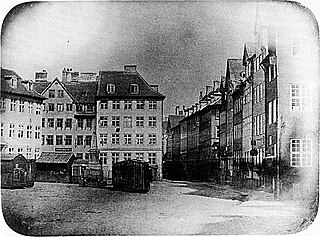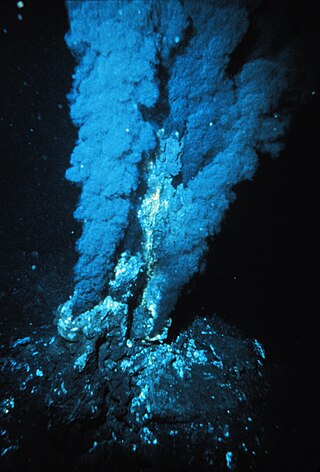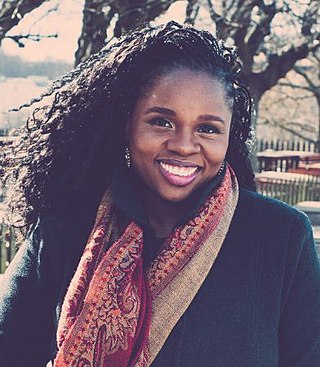Related Research Articles

The Ruwenzori, also spelled Rwenzori and Rwenjura, or Rwenzururu are a range of mountains in eastern equatorial Africa, located on the border between Uganda and the Democratic Republic of the Congo. The highest peak of the Ruwenzori reaches 5,109 metres (16,762 ft), and the range's upper regions are permanently snow-capped and glaciated. Rivers fed by mountain streams form one of the sources of the Nile. Because of this, European explorers linked the Ruwenzori with the legendary Mountains of the Moon, claimed by the Greek scholar Ptolemy as the source of the Nile. Virunga National Park in eastern DR Congo and Rwenzori Mountains National Park in southwestern Uganda are located within the range.

The Ross Ice Shelf is the largest ice shelf of Antarctica. It is several hundred metres thick. The nearly vertical ice front to the open sea is more than 600 kilometres (370 mi) long, and between 15 and 50 metres high above the water surface. Ninety percent of the floating ice, however, is below the water surface.

The Amundsen Sea is an arm of the Southern Ocean off Marie Byrd Land in western Antarctica. It lies between Cape Flying Fish to the east and Cape Dart on Siple Island to the west. Cape Flying Fish marks the boundary between the Amundsen Sea and the Bellingshausen Sea. West of Cape Dart there is no named marginal sea of the Southern Ocean between the Amundsen and Ross Seas. The Norwegian expedition of 1928–1929 under Captain Nils Larsen named the body of water for the Norwegian polar explorer Roald Amundsen while exploring this area in February 1929.
The Hasselblad Award is an award granted to "a photographer recognized for major achievements".

Mount Olympus, at 7,980 feet (2,430 m), is the tallest and most prominent mountain in the Olympic Mountains of western Washington state, US. Located on the Olympic Peninsula, it is also a central feature of Olympic National Park. Mount Olympus is the highest summit of the Olympic Mountains; however, peaks such as Mount Constance and The Brothers, on the eastern margin of the range, are better known, being visible from the Seattle metropolitan area.

The Rhône Glacier is a glacier in the Swiss Alps and the source of the river Rhône and one of the primary contributors to Lake Geneva in the far eastern end of the Swiss canton of Valais. Because the glacier is located close to the Furka Pass road it is easily accessible.

Mir was a class of two self-propelled deep-submergence vehicles. The project was initially developed by the USSR Academy of Sciences along with Lazurit Central Design Bureau, and two vehicles were ordered from Finland. The Mir-1 and Mir-2, delivered in 1987, were designed and built by the Finnish company Rauma-Repola's Oceanics subsidiary. The project was carried out under the supervision of constructors and engineers of the Shirshov Institute of Oceanology.
David Doubilęt is an underwater photographer known primarily for his work published in National Geographic magazine, where he is a contributing photographer and has been an author for 70 feature articles since 1971. He was born in New York City and started taking photos underwater at the young age of 12. He started with a Brownie Hawkeye in a rubber anesthesiologist's bag to keep the water out of the camera. He lived with his family in New York City and spent summers in Elberon New Jersey exploring the Atlantic. He later worked as a diver and photographer for the Sandy Hook Marine Laboratories in New Jersey and spent much of his youth in the Caribbean as a teenage dive instructor in the Bahamas where he found his motivation to capture the beauty of the sea and everything in it. His wife is the photographer Jennifer Hayes.

Boris Andreyevich Mikhailov or Borys Andriyovych Mykhailov is a Ukrainian photographer. He has been awarded the Hasselblad Award and the Citibank Private Bank Photography Prize.

Brian Skerry is an American photojournalist and film producer specializing in marine life and ocean environments. Since 1998 he has been a contributing photographer for National Geographic magazine with more than 30 stories to his credit, including 6 covers. In 2021 Skerry won a Primetime Emmy Award for his role as producer in the miniseries, Secrets of the Whales.

James Balog is an American photographer whose work explores the relationship between humans and nature. He is the founder and director of Earth Vision Institute in Boulder, Colorado.

In Denmark, photography has developed from strong participation and interest in the very beginnings of the art in 1839 to the success of a considerable number of Danes in the world of photography today.

Astrobiology Science and Technology for Exploring Planets (ASTEP) was a program established by NASA to sponsor research projects that advance the technology and techniques used in planetary exploration. The objective was to enable the study of astrobiology and to aid the planning of extraterrestrial exploration missions while prioritizing science, technology, and field campaigns.

Diane Burko is an American painter and photographer. She is currently based in Philadelphia and Bucks County, Pennsylvania. Her work addresses landscape, climate change and environmental activism.

Felicity Ann Dawn Aston is a British explorer, author and climate scientist.

Tomas van Houtryve is a Belgian visual artist, director and cinematographer working mainly with photography and video. He is an Emeritus member of the VII Photo Agency, and a Contributing Artist for Harper's Magazine.
Major Levison James Wood,, VR is a British Army officer and explorer. He is best known for his extended walking expeditions in Africa, Asia, and Central America. He has also undertaken numerous other overland journeys, including a foot crossing of Madagascar and mountain climbing in Iraq. He documents his journeys through books, documentaries, and photography.

Lola Akinmade Åkerström is a Nigerian photographer, speaker, travel storyteller and an international author whose books are published in 18 languages. She is based in Stockholm, Sweden. She is the current editor-in-chief for Slow Travel Stockholm. Her works have been featured in the National Geographic Traveler, BBC, and CNN, among other publications. She studied Geography Information System (GIS) and holds a masters degree at the University of Maryland. Her work focuses on culture, tradition, and lifestyle. She has dispatched from more than 70 countries with work in National Geographic, New York Times, The Guardian, BBC, CNN, Travel Channel, Travel + Leisure, Lonely Planet, Forbes, and many others. She has collaborated with brands such as Dove, Mercedes Benz, Intrepid Travel, Electrolux, and National Geographic Channel. She is a Hasselblad Heroine and 2018 Bill Muster Travel Photographer of the Year. Her photography is in the National Geographic Image Collection and she's a proud member of Women Photograph and Wonderful Machine.She was recognized as one of the Most Influential People of African Descent (MIPAD) in Media & Culture, and she runs her own online academy, Geotraveler Media Academy, dedicated to storytelling.
Project Pressure is a charity with an ecological and climate focus. Their expressed mission is to create impactful projects that triangulating art, science and activism resulting in impactful actions on environmental issues. The global environmental charity was founded in 2008, with the mission of visualizing the climate crisis. Project Pressure uses art as a touchpoint to inspire action and behavioral change. At the time, Project Pressure focused on work surrounding glacier mass loss.

Underwater exploration is the exploration of any underwater environment, either by direct observation by the explorer, or by remote observation and measurement under the direction of the investigators. Systematic, targeted exploration is the most effective method to increase understanding of the ocean and other underwater regions, so they can be effectively managed, conserved, regulated, and their resources discovered, accessed, and used. Less than 10% of the ocean has been mapped in any detail, less has been visually observed, and the total diversity of life and distribution of populations is similarly obscure.
References
- 1 2 3 "Biography". klausthymann.com. Retrieved 18 December 2023.
- 1 2 Main, Douglas (26 March 2015). "Photographing the World's Vanishing Glaciers". Newsweek. Retrieved 29 September 2022.
- 1 2 Milmoe, Joanne. "Klaus Thymann wins Sony World Photography Award". www.dacs.org.uk. Retrieved 29 September 2022.
- ↑ "Klaus Thymann, Denmark". www.worldphoto.org. Retrieved 29 September 2022.
- ↑ "Hasselblad ambassador Klaus Thymann Denmark". Hasselblad. Retrieved 29 September 2022.
- ↑ "Simon Norfolk & Klaus Thymann". Granta. Retrieved 29 September 2022.
- ↑ Seibt, Esther (29 January 2021). "Klaus Thymann: An Interview with the Photographer, Filmmaker and Explorer". nobleandstyle.com. Retrieved 29 September 2022.
- 1 2 3 4 Lowe, Jaime; Thymann, Klaus (24 February 2017). "Floating With Leviathans in the South Pacific". www.nytimes.com. Retrieved 29 September 2022.
- ↑ McVeigh, Karen (10 August 2022). "'We borrow our lands from our children': Sami say they are paying for Sweden going green". The Guardian. ISSN 0261-3077 . Retrieved 5 March 2024.
- ↑ "Hidden depths". Red Bull. 13 April 2021. Retrieved 5 March 2024.
- ↑ Thymann, Klaus (11 May 2015). "Iran's Former American Embassy Is Now a Museum of Anti-American Art". Vice. Retrieved 5 March 2024.
- ↑ "Vanishing Glaciers by Project Pressure - in pictures". the Guardian. 28 March 2018. ISSN 0261-3077 . Retrieved 5 March 2024.
- ↑ Kotsoni, Elektra (27 February 2014). "La città svedese che sta sprofondando". Vice. Retrieved 29 September 2022.
- ↑ Schmid, Gerhard (11 July 2001). "On the existence of a global system for the interception of private and commercial communications (ECHELON interception system), (2001/2098(INI))". European Parliament: Temporary Committee on the ECHELON Interception System. Archived from the original on 26 December 2013. Retrieved 29 September 2022.
- 1 2 "Coral discovered in uncharted Danish waters – in pictures". The Guardian. 17 July 2020. Retrieved 29 September 2022.
- 1 2 "Meltdown: the climate crisis – in pictures". The Guardian. 19 June 2019. Retrieved 29 September 2022.
- 1 2 "Greenland's glaciers through an artist's eyes - in pictures". The Guardian. 25 February 2016. Retrieved 29 September 2022.
- ↑ Vankin, Jonathan (7 November 2017). "What's So Special About This Lake That Humans Are Not Allowed To Swim In It? Something Amazing". www.inquisitr.com. Retrieved 29 September 2022.
- ↑ Farrell, Stephen (2 December 2011). "The Graveyard Shift". The New York Times . Retrieved 29 September 2022.
- 1 2 "The race to map Africa's forgotten glaciers – in pictures". The Guardian. 2 June 2012. Retrieved 29 September 2022.
- ↑ McLeod, Ruth; Thymann, Klaus (13 April 2021). "Hidden depths". www.redbull.com. Retrieved 29 September 2022.
- ↑ Lambelet, Sylvie (31 August 2019). "Le festival de photographie Alt. +1000 se déplace dans le Jura neuchâtelois". www.rts.ch (in French). Retrieved 27 September 2022.
- ↑ "Klaus Thymann on display at The Natural History Museum in Vienna". instituteartist.com. 1 May 2019. Retrieved 29 September 2022.
- ↑ "Award-winning Danish photographer and project pressure founder Klaus Thymann joins prestigious lineup of Hasselblad ambassadors". Hasselblad. 6 May 2020. Retrieved 29 September 2022.
- ↑ "Klaus Thymann representing Denmark in the photo exhibition Forever Changes at COP26 in Glasgow". www.project-pressure.org. 8 October 2021. Retrieved 29 September 2022.
- ↑ "Klaus Thymann 'Hybrids'". www.jaguarshoes.com. 26 October 2007. Retrieved 29 September 2022.
- ↑ Hudson, Will (19 December 2007). "Hybrids Project / Klaus Thymann". www.itsnicethat.com. Retrieved 29 September 2022.
- ↑ Vidal, John (5 June 2012). "Race to Map Africa's Forgotten Glaciers Before They Melt Away". www.motherjones.com. Retrieved 29 September 2022.
- ↑ Daly, Ian (5 May 2012). "Last chance to see: a photographic tour of Earth's doomed ice". Wired. Retrieved 29 September 2022.
- ↑ Main, Douglas (20 June 2013). "Photos: The Clearest Lake on Earth". www.livescience.com. Retrieved 29 September 2022.
- ↑ "The clearest lake in the world – in pictures". The Guardian. 12 June 2013. Retrieved 29 September 2022.
- ↑ "Clearest Lake". www.photoawards.com. 1 February 2015. Retrieved 29 September 2022.
- ↑ Kotsoni, Elektra (24 February 2014). "The Swedish Town Being Swallowed by the Earth". Vice. Retrieved 29 September 2022.
- ↑ "Glaciers of Iran – in pictures". The Guardian. 16 December 2014. Retrieved 27 September 2022.
- ↑ Testere, Alex (23 March 2017). "What It's Like to Eat Breakfast Above the Clouds". www.saveur.com. Retrieved 27 September 2022.
- ↑ Locke, Charley (16 August 2016). "This Guy Went to Earth's Most Remote Places So You Don't Have To". www.wired.com. Retrieved 29 September 2022.
- ↑ Daly, Ian. "Exploring the Secret Caves Beneath Mexico's Biggest Tourist Destination". www.mensjournal.com. Retrieved 29 September 2022.
- ↑ "Underwater Explorer". www.redbull.com. 2020. Retrieved 27 September 2022.
- ↑ Hilaire, Eric (17 May 2018). "'Swimming into the unknown:' Mexico's unmapped underwater caves - in pictures". The Guardian. Retrieved 29 September 2022.
- ↑ "Flows For Manatees". www.waterbear.com. Retrieved 10 March 2023.
- ↑ Stock, David. "Manatees discovered in pristine but threatened underwater cave habitat". New Scientist. Retrieved 5 March 2024.
- ↑ Bachmann, Helena (13 March 2018). "The Swiss found a way to save this glacier from melting: Wrap it in a giant blanket". www.usatoday.com. Retrieved 29 September 2022.
- ↑ Suzanne, McGonagle (18 May 2021). "Climate change, migration and power of protest among themes of Belfast Photo Festival". www.irishnews.com. Retrieved 29 September 2022.
- ↑ Ings, Simon (20 September 2018). "Photography: heating up the climate campaign". www.newscientist.com. Retrieved 29 September 2022.
- ↑ Ollman, Leah (29 April 2019). "Review: Simon Norfolk's traumatic photos capture a Swiss glacier on life support". Los Angeles Times. Retrieved 29 September 2022.
- ↑ "Klaus Thymann films and photographs Bikini Atoll". www.instituteartist.com. 28 May 2019. Retrieved 29 September 2022.
- ↑ Piven, Ben (23 September 2019). "Voices for the Future urges climate action at UN". www.aljazeera.com. Retrieved 29 September 2022.
- ↑ "Voices for the Future: climate activism lights up the UN – in pictures". The Guardian. 20 September 2019. Retrieved 29 September 2022.
- ↑ Stock, David. "Uncharted waters: The scientists saving Denmark's hidden coral". New Scientist. Retrieved 5 March 2024.